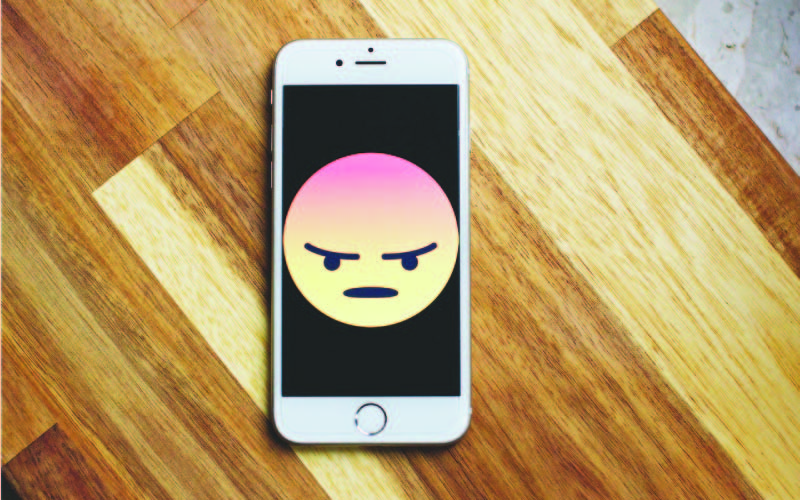Taylor’s University (Malaysia) Cyberbullying: The Difference Between Opinions and Hateful Messages

What’s preventing us from putting an end to cyberbullying? Read more about what we need to do to stop it.
Thus, it’s time to shine light on the line between moral and immoral.
To understand better, we need to dig deeper.
Cyberbullying is defined as the use of technology to harass, threaten, embarrass, or target an individual. However, cyberbullying takes different forms in today’s day and age. Hence, the definition has been socially reconstructed as more individuals express their thoughts and opinions with a lack of respect towards the other which ends up being a form of discrimination. However, with the accessibility and freedom to throw your thoughts on social media, oftentimes many don’t intend to do any harm. In fact, most individuals on social media don’t even realise that they’re indirectly cyberbullying.
But why aren’t we educating or acknowledging such actions as cyberbullying? It’s because of the grey area between opinion and hate.
An opinion is the legal act of expressing one’s thoughts — simple right?
However, the problem steps in when it’s taken advantage of. To elaborate, even though we may have the right to share our own personal thoughts, it’s vital to acknowledge the limit when someone goes against social standards to discriminate or disrespect another individual. While both opinions and hate speeches involve being vocal on your personal thoughts on something, an opinion turns to hate when it permits anyone to make pejorative and hostile statements.
So, what happens if we don’t acknowledge the line?
One popular occurrence was when former Miss Universe Malaysia, Samantha Katie James, posted a series of opinions on the Black Lives Matter protests. In an attempt to reduce discrimination and call her out on her actions, many responded by creating a bigger and more dangerous fight through cyberbullying.
In more recent scenarios, though the 2020 Tokyo Olympics saw the nation coming together to support our fellow Malaysian athletes, many took to social media to condemn the athletes that didn’t make it to the finish line. But instead of putting on our keyboard warrior capes, these are the times where we should shine a supportive light towards our victims instead of turning ourselves into ‘helpful’ bullies.

Cyberbullying is never a one-way road — the act and its consequences play a bigger part towards the witnesses and victims of bullying. Thus, fighting fire against fire will only make our fight hurt a much bigger community. If that’s the motive, what makes our argument valid?
Our fight for cyberbullying should never be silenced, but it’s time for us to play the bigger game.
Since 2017, cyberbullying has gained 9% of awareness in comparison to past years — but how can we do more for each group of individuals involved? Here’s what we could do to make everyone feel safe.
If you’re being bullied:
To everyone that’s a victim of cyberbullying, you’re never alone. Reach out to those you trust, whether it’s your friends or family members. If the bully is someone close to you, try expressing your emotions to them as they may have unintentionally caused harm and will be educated to not repeat such mistakes again.
However, if you face any form of hate intentionally, you should block and report the user to the platform or to the authorities. The urge to retaliate will rise as we turn towards the bully in helplessness, and though such emotions are understandable and any form of disrespect should never be ignored, it’s essential to understand that when one gets cyberbullied, we must remember to not fight fire with fire.
Instead, find an effective, dominant, and respectable way to say, “Enough!”.
If you’ve witness someone being bullied:
We commonly see criticism in topics that involve a democratic opinion projected towards a certain community or individual regardless of the social platform. Even though criticism arises from views that are morally or factually intolerable, these are times when we’re called to resolve the situation by acknowledging the victims’ emotions and to educate those who have crossed the line. Therefore, when acknowledging an act of cyberbullying, be careful to not hurt the bully but instead support the victim by educating, blocking, and reporting the user.
If you’re bullying someone:
Whether done intentionally or unintentionally, cyberbullying results in an individual being hurt.
As users of social platforms, we must be aware of our tone and terminologies used when sharing our thoughts. Reflection is key so before sharing a comment, reflect on your point and what you aim to say. For starters, try imagining that you’re receiving the comment — how would you feel?
Let’s do our part in spreading kindness on our social media accounts and to prevent cyberbullying the proper way.
